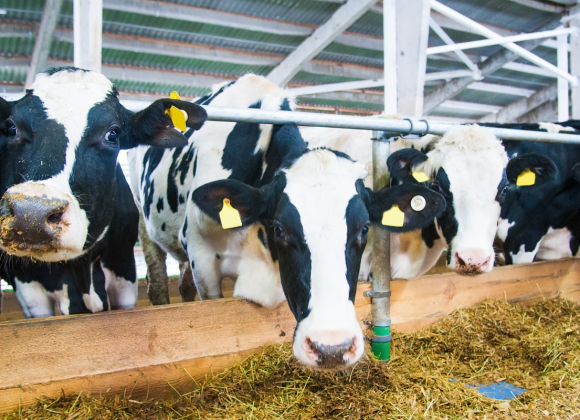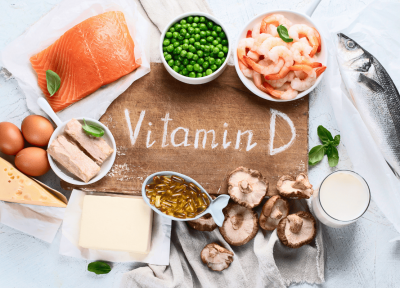The sale of raw milk has been increasing in recent years driven by those looking to take advantage of its perceived health benefits. However, raw milk can contain a variety of disease causing pathogens and its health claims are not backed up by scientific research. In this article, we look at popular claims about raw milk compared to what the research shows.
What is Raw Milk?
Raw milk refers to milk that has not been pasteurized. Pasteurization is a process that uses high heat and pressure to kill disease causing pathogens. While milk comes from a nearly sterile environment in the animal, from the moment an animal is milked, contamination can occur as the milk encounters the udder, skin, milking equipment, and even feces. Good practices on dairy farms can reduce contamination in processing, but raw milk can still be a source of foodborne illness as farmers cannot guarantee it does not contain disease causing pathogens naturally present in or on the animal.
Pasteurized Milk Prevents Disease
As scientists began to understand microbes as the cause of diseases, they linked raw milk to outbreaks such as tuberculosis and typhoid fever. This led to the dairy industry in the United States (US) standardizing pasteurization and other safety practices to prevent the spread of disease through raw milk in 1924. While we may not think about them often, the pathogens that can be found in raw milk are still around today, as shown by the recent tuberculosis outbreak in Kansas and the ongoing bird flu outbreak. Pasteurization also prevents common food-borne infections such as E. coli, Listeria, and Salmonella. Drinking raw milk increases the likelihood of illness as raw milk does not have the increased safety profile of pasteurized milk.
Pasteurized Milk is Nutritious
Pasteurizing milk does not significantly reduce the vitamins, carbohydrates, minerals, or fat in milk. Milk is high in calcium and phosphorus, which are important for bone health. These minerals are both heat stable and not impacted by pasteurization. Levels of vitamin A, D, E, and K are also not impacted by pasteurization. Vitamins B and C are present in very low levels in milk and while decreases of these vitamins due to pasteurization have been reported, the loss of nutritional value is minor due to their already low levels.
Milk is also a source of protein made up of 80% casein protein and 20% whey protein. Some falsely claim that pasteurization destroys both types of protein in milk. Casein is a very heat stable protein, and pasteurizing milk does not reduce its levels. Whey protein is more susceptible to heat damage during pasteurization, but the impact is minor. One cup of pasteurized milk will still contain 8 grams of protein. Overall, pasteurized milk is highly nutritious.
Raw Milk Does Not Cure Lactose Intolerance
Milk contains a sugar called lactose, which is digested by the enzyme lactase. Lactase is produced in the small intestine and a decrease in lactase production leads to lactose-intolerance in people. Both raw milk and pasteurized milk contain similar amounts of lactose.
Proponents of raw milk claim that because raw milk contains lactase producing bacteria, it is easier to digest. However, a research study of participants with lactose-intolerance given pasteurized milk, raw milk, and soy milk each for a week in a random order found that raw milk failed to reduce the participants’ lactose-intolerance symptoms. Since raw milk does not specifically contain lactase there is no reason it would be better tolerated by lactose-intolerant individuals.
Raw Milk Does Not Cause a Reduction in Allergies
A 2007 study found that drinking farm milk was associated with a decrease in allergies and asthma in children. However, the study clarified that farm milk was not raw milk. In this study, farm milk simply meant milk directly from one’s farm that was often boiled (like pasteurization) before drinking. The authors specifically noted,
“The present study does not allow evaluating the effect of pasteurized vs. raw milk consumption because no objective confirmation of the raw milk status of the farm milk samples was available.”
Furthermore, this study only found an association between kids who drank farm milk and reported less allergies. Associations observe two things happening at the same time but do not investigate whether those two things cause each other. Association alone does not mean causation. It is also well-established that exposure to microbes from farming is also associated with reduced allergy and asthma, making it difficult to differentiate between farming exposure and drinking farm milk as the true cause of reduced allergies. The US Food and Drug Administration cites this study as often being misused to advocate for raw milk consumption.
Drink Pasteurized Milk
Pasteurization effectively kills pathogens in milk without a negative impact on nutritional quality. The benefits of pasteurized milk are supported by rigorous scientific research and a century of positive public health impact. If you are looking to drink raw milk to address a health concern, talk to a doctor about alternative solutions.

